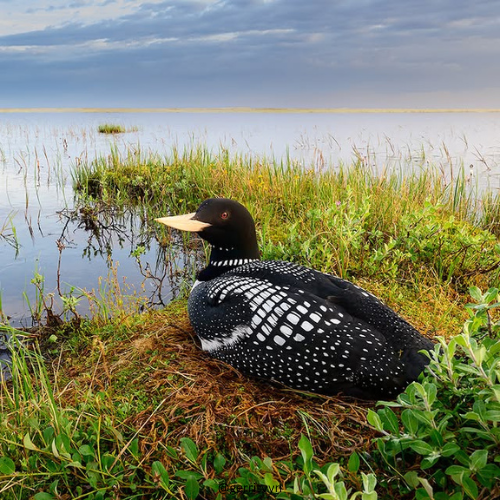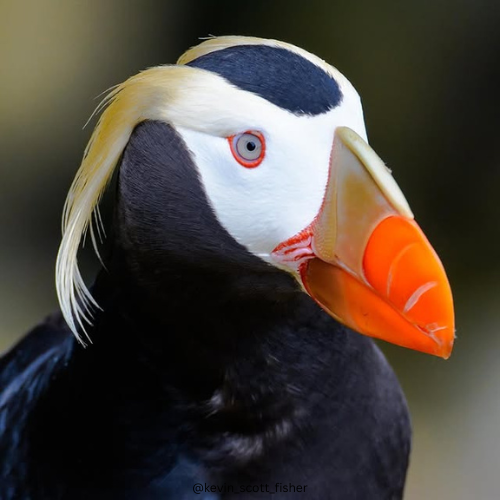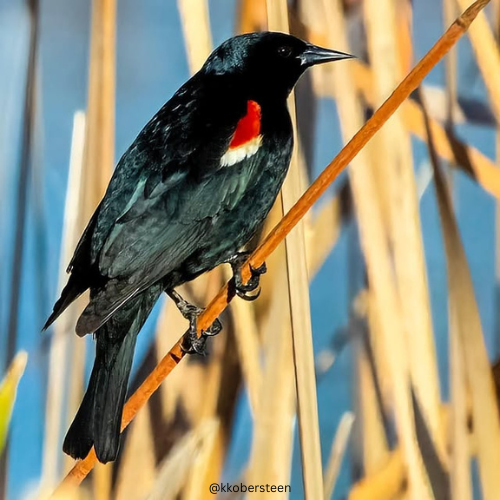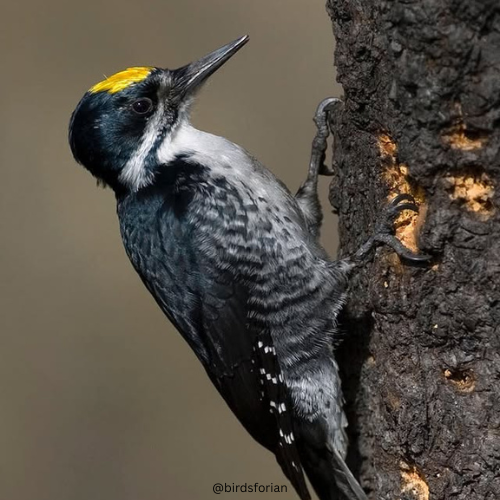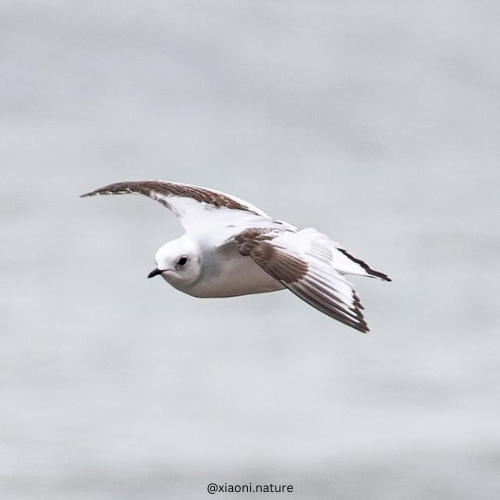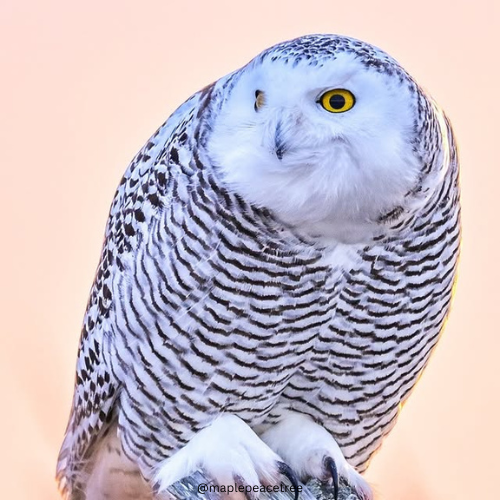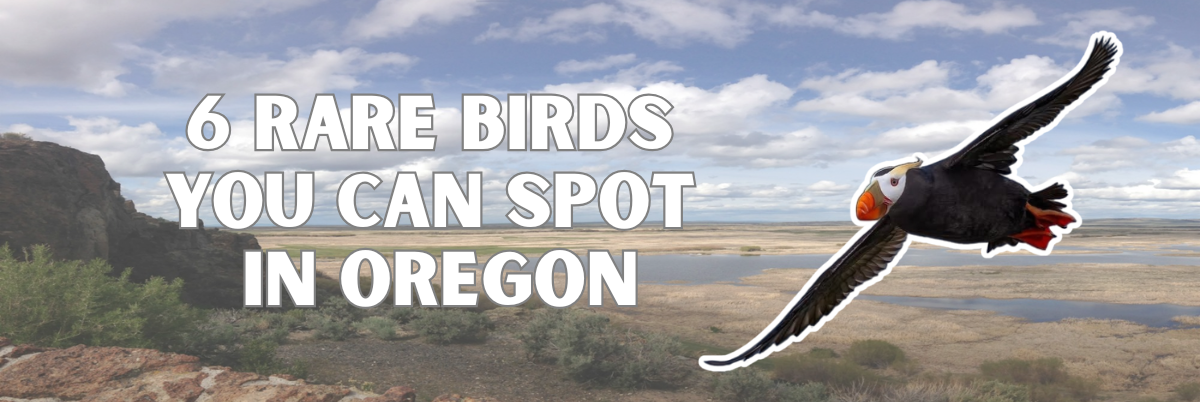
By Avian Feathers Team
Published July 2025
Oregon is full of natural beauty, from coastal cliffs to sagebrush flats, and while many birds call the state home, some are just passing through or hiding in hard-to-reach places. If you’re lucky enough to spot one of these rare species, you’re in for a treat.
Here are six rare birds that birders quietly hope to see in Oregon.
1. Yellow-billed Loon
Massive and mysterious, the Yellow-billed Loon is one of the rarest loons you’ll ever find. It shows up along Oregon’s coast during winter, but only a few individuals are seen each year. Its pale bill and large size help distinguish it from the more common Common Loon. If you’re near the ocean on a chilly day, keep your scope ready.
Size
Length: 30–32 in (76–81 cm)
Wingspan: 55–60 in (140–152 cm)
Weight: 8.8–14.3 lbs (4–6.5 kg)
Scientific Name: Gavia adamsii
2. Tufted Puffin
With its bold orange beak and long yellow tufts, the Tufted Puffin looks almost unreal. These seabirds nest on offshore islands along the Pacific but have become increasingly rare. In Oregon, your best chance is spotting one near the rocky cliffs of the coast during breeding season.
Size
Length: 14–15 in (35–38 cm)
Wingspan: 22–24 in (56–61 cm)
Weight: 1.4–1.7 lbs (635–775 g)
Scientific Name: Fratercula cirrhata
3. Tricolored Blackbird
At first glance, this bird might look like a Red-winged Blackbird, but its red-and-white wing patches set it apart. Tricolored Blackbirds are struggling due to habitat loss and are now listed as a species of concern. A small number still breed in southern Oregon, but sightings are scarce.
Size
Length: 7.5–9.8 in (19–25 cm)
Wingspan: 10.2–13.8 in (26–35 cm)
Weight: 1.5–2.3 oz (43–65 g)
Scientific Name: Agelaius tricolor
4. Black-backed Woodpecker
This secretive woodpecker specializes in recently burned forests, where it feeds on beetle larvae under charred bark. Its glossy black back helps it blend into scorched trees. Black-backed Woodpeckers are rare in Oregon and usually found only in remote, post-fire areas.
Size
Length: 9.1 in (23 cm)
Wingspan: 15.8–16.5 in (40–42 cm)
Weight: 2.1–3.1 oz (61–88 g)
Scientific Name: Picoides arcticus
5. Ross’s Gull
A true Arctic wanderer. Ross’s Gulls breed in the far north and only show up in the lower 48 on rare occasions. Every once in a while, one will make its way to Oregon’s coast during migration. With a delicate pink flush and a neat black collar, it’s a tiny gull that’s big news in the birding world.
Size
Length: 11.8–15 in (30–38 cm)
Wingspan: 35–39 in (89–99 cm)
Weight: 4.2–5.6 oz (120–160 g)
Scientific Name: Rhodostethia rosea
6. Snowy Owl
These ghostly white owls are Arctic residents, but in some winters, they journey south during what’s called an “irruption.” When they do, a few might land in open fields or coastal dunes in Oregon. Their striking appearance makes them one of the most sought-after rare sightings.
Size
Length: 20.5–27.9 in (52–71 cm)
Wingspan: 49.6–57.1 in (126–145 cm)
Weight: 3.2–5.3 lbs (1.5–2.4 kg)
Scientific Name: Bubo scandiacus
Where to Spot Common Birds in Oregon
Spotting these rare birds in Oregon often depends on specific timing, precise habitat, and sometimes, a stroke of luck or active birding community alerts:
Yellow-billed Loon: A rare winter visitor along Oregon’s coast. Best chance for sightings would be in coastal bays, large estuaries, and near offshore waters, often requiring a spotting scope. Monitor local birding reports during cold months.
Tufted Puffin: These seabirds nest on offshore islands and rocky cliffs along the Oregon Coast during the breeding season (spring/summer). Viewings are typically from coastal viewpoints (e.g., Haystack Rock at Cannon Beach, Face Rock at Bcola) or via boat tours that visit near nesting colonies. Their populations are declining, making sightings increasingly rare.
Tricolored Blackbird: A species of concern, with small breeding populations sometimes found in southern Oregon. Look in wetlands, marshes with cattails, and agricultural areas with dense shrub cover. Any sighting is significant and often reported by local birders.
Black-backed Woodpecker: Highly specialized and rare. Found almost exclusively in recently burned coniferous forests (typically within the first few years after a major wildfire) in the Cascade Mountains and eastern Oregon forests. They blend in well with charred trees.
Ross’s Gull: An extremely rare Arctic vagrant. Any sighting in Oregon would be highly exceptional and unpredictable, most likely occurring along the Pacific Coast, in sheltered bays, or large estuaries during fall or winter migration. Birding alerts are the best way to be aware of a confirmed presence.
Snowy Owl: A rare and irregular winter visitor (during irruptions) from the Arctic. If present in Oregon, they are typically found in open coastal areas, agricultural fields, prairies, or airports, often perched conspicuously on the ground, fence posts, or low humps.
Rare birds don’t make daily appearances—but when they do, it’s unforgettable.
Have you ever spotted one of these in Oregon?

